Survive Anything: What to Put in a Survival Backpack in 2023
Preparing a survival backpack is your key to safety in the great outdoors. Learn what essential items to pack for any adventure or emergency situation.
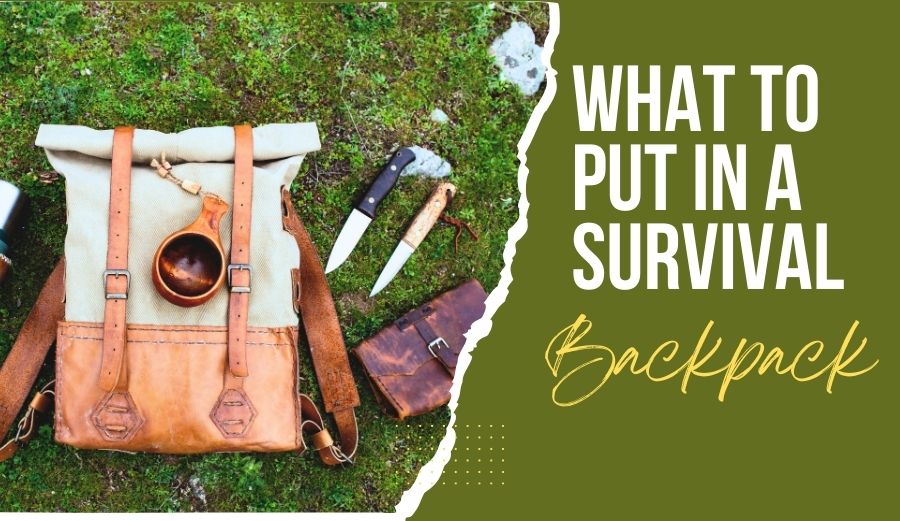
Knowing what to put in a survival backpack can mean the difference between triumph and turmoil in outdoor adventures. Whether you’re a seasoned backpacker, an avid camper, or simply someone who enjoys exploring the great outdoors, the significance of comprehensive preparation cannot be overstated.
This guide is your compass to assembling a survival backpack that will serve as your ultimate companion in times of need. From essential tools to nourishment and protection, we’ll cover every crucial item you should include in your survival kit, empowering you to face the unknown with confidence and readiness.
Table of Contents
ToggleBare Essentials for Every Survival Backpack
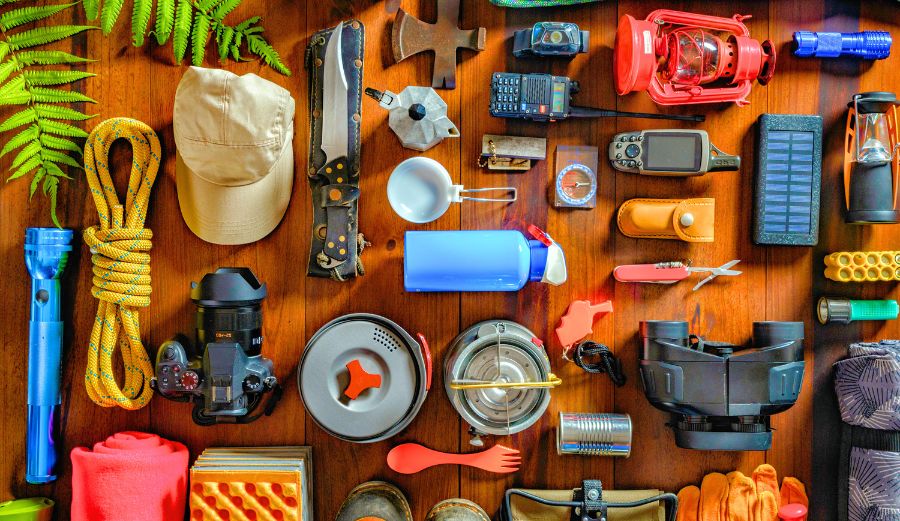
When venturing into the great outdoors, whether for a weekend camping trip or to prepare for the unexpected, a well-packed survival backpack can be your lifeline. This comprehensive guide delves into the core essentials of every survival backpack, ensuring you are ready to tackle the challenges of the wilderness and unforeseen emergencies.
A. Food and Hydration
- High-Calorie Non-Perishable Foods: In any survival scenario, energy is your most valuable asset. Include high-calorie, non-perishable foods such as energy bars, dehydrated meals, nuts, and trail mixes. These lightweight options provide the vital sustenance needed to keep you going.
- Water and Purification Methods: While you may find freshwater sources in the wild, carrying your water and purification tools is crucial. Invest in a durable water container and purification methods like water filters, purification tablets, or a reliable portable water purifier. Clean, safe drinking water is non-negotiable for your survival.
B. Shelter and Clothing
- Waterproof Jacket and Warm Clothing: Protecting yourself from the elements is paramount. Pack a waterproof jacket with waterproof zippers, adjustable cuffs, and an elasticized hem. Layer your clothing for versatility, including moisture-wicking base layers, insulating mid-layers, and a warm, weatherproof outer layer.
- Emergency Blankets: Emergency blankets, also known as space blankets, are incredibly lightweight and compact. These reflective blankets can provide critical insulation, warmth, and shelter, making them essential for any survival backpack. In emergencies, they can help conserve body heat and protect against hypothermia.
C. Navigation and Communication
- Compass and Maps: Accurate navigation tools are your compass to safety. Carry a reliable compass and detailed maps of the area you plan to explore. Even if you rely on GPS devices, having these analog tools as backups is wise. A good understanding of how to use them is equally important.
- Communication Devices and Signaling Tools: Staying connected and signaling for help is vital in emergencies. If you venture into remote areas, include communication devices like a fully charged mobile phone, two-way radios, or a satellite phone. Pack signaling tools such as a whistle, signal mirror, or even a flare kit to attract attention when needed.
Finally, your survival backpack should be a well-thought-out collection of items tailored to your specific needs and the environment you’re entering. These bare essentials for food, hydration, shelter, clothing, navigation, and communication are the foundation for a prepared and resilient outdoor experience.
Remember, preparation is vital, and a well-equipped survival backpack could mean the difference between safety and adversity in the wild or during unexpected situations.
Personal Safety and First Aid
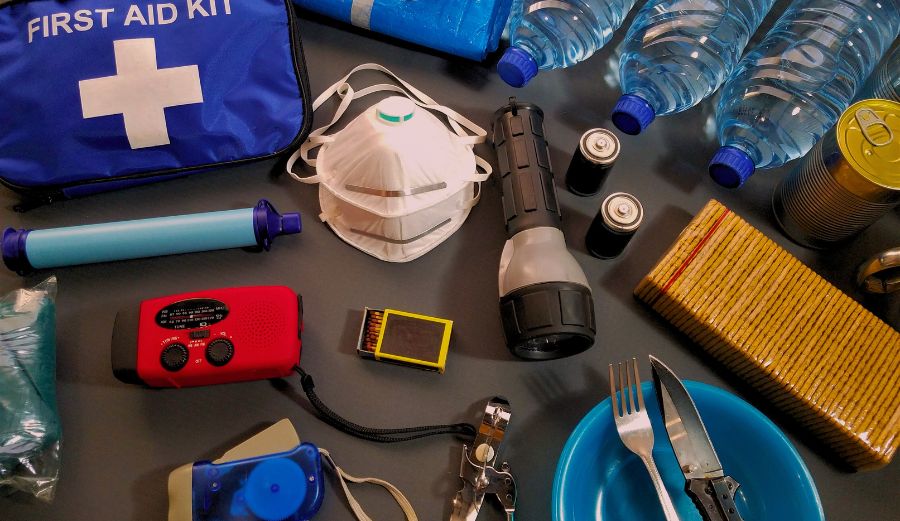
Survival situations can be unpredictable, and preparing for injuries and emergencies is paramount. This section covers essential personal safety and first aid items to include in your survival backpack.
A. Knife
- Versatility and Lifesaving Potential: A quality survival knife is more than just a tool; it’s a lifeline. It serves multiple purposes, from cutting rope, preparing food, building shelters, and even self-defense. Choose a versatile, durable knife that can withstand rugged use and maintain sharpness.
B. First Aid Kit
- Basic Medical Supplies: Your first aid kit should include essential medical supplies such as adhesive bandages, sterile gauze pads, medical tape, scissors, and tweezers. These items are invaluable for treating minor injuries like cuts, scrapes, and blisters.
- Antiseptics and Medications: Pack antiseptic wipes or solutions to clean wounds and prevent infection. Include over-the-counter medications like pain relievers, antihistamines, and anti-diarrheal drugs. Personalize your first aid kit with any prescription medications you may require.
C. Emergency Medical Equipment
- Quikclot for Bleeding Injuries: In cases of severe bleeding, time is of the essence. Quikclot is a hemostatic agent that promotes rapid blood clotting, which is crucial for managing catastrophic bleeding injuries. It can be a lifesaver when conventional methods are insufficient.
- Oropharyngeal Airway for Airway Management: This plastic tube helps maintain an open airway by preventing the tongue from obstructing the throat. While primarily used when a person is unconscious, it can be vital in emergency situations.
- Asherman Chest Seal for Chest Injuries: Chest seals are designed to treat penetrating chest wounds, such as those caused by gunshot or stabbing. They allow air and blood to escape the chest cavity while preventing air from re-entering, a critical step in treating such injuries.
- Tourniquet for Extreme Situations: While standard first aid advice is to avoid tourniquets, they have a place in extreme situations where life-threatening bleeding cannot be controlled otherwise. A tourniquet can save a life when used correctly and as a last resort.
- Epipen for Allergic Reactions: If you have known allergies, especially severe ones, carrying an EpiPen (epinephrine auto-injector) is essential. It can rapidly reverse the effects of an allergic reaction, which can be life-threatening.
So, personal safety and first aid items are the backbone of your survival backpack. While prevention is the best strategy, accidents can happen. By including these essential tools and medical supplies, you can address injuries and emergencies promptly, increasing your chances of a safe outcome in challenging situations.
Always ensure you are trained in using these items effectively and seek professional medical assistance when necessary.
Survival Tools and Gear
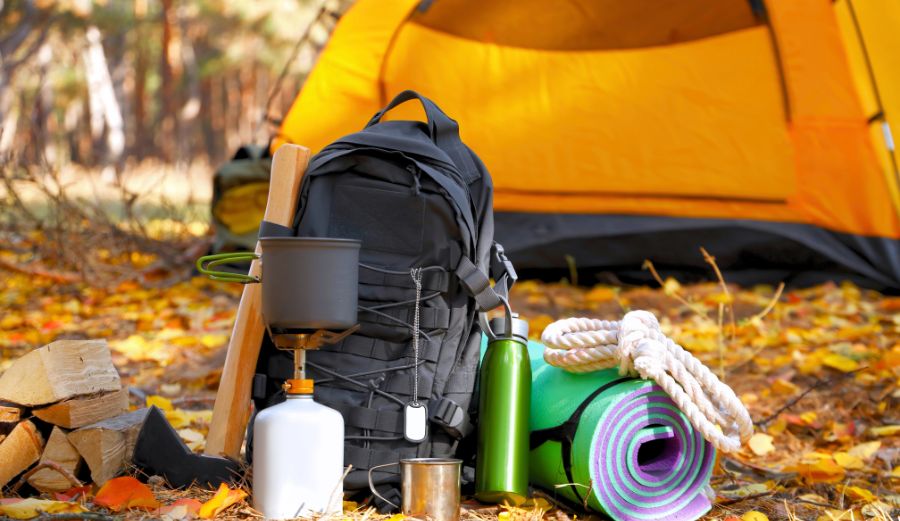
In any survival scenario, having the right tools and equipment can make a significant difference. This section focuses on essential survival tools and gear for your backpack.
A. Lighting and Fire
- Flashlight and Extra Batteries: A reliable flashlight is indispensable for visibility in low-light conditions and emergencies. Choose an energy-efficient LED flashlight and carry extra batteries to ensure a long-lasting light source.
- Waterproof Matches and Fire-Starting Materials: Fire is a source of warmth and a means to signal for help and purify water. Pack waterproof matches or a fire-starting kit that includes flint, tinder, and fire starters to ensure you can ignite a fire even in adverse weather conditions.
B. Tools and Equipment
- Multi-Functional Tools: Multi-tools, like Swiss Army knives, offer a variety of functions in a compact package. Look for tools with pliers, blades, screwdrivers, and more. They can assist with repairs, building shelters, and various other tasks.
- Rope for Various Uses: A sturdy rope has countless applications, from building shelters and setting traps to securing gear and creating emergency harnesses. Consider carrying a paracord or a similar versatile cordage.
- Head Torch for Night Visibility: Nightfall doesn’t mean your activities cease. A head torch leaves your hands free for other tasks while providing essential illumination. Ensure it has adjustable brightness settings and carries spare batteries.
C. Navigation Aids
- Pocket Compass for Direction: Even with modern technology, a simple pocket compass can be a reliable tool for maintaining your sense of direction. It doesn’t rely on batteries and works in areas with limited GPS signals.
- GPS Device for Advanced Navigation: While a compass is a basic necessity, a GPS device offers advanced navigation capabilities. It can provide precise coordinates, track your route, and help you find your way in unfamiliar terrain. Ensure it’s fully charged, and consider carrying a backup power source.
In summary, survival tools and gear are essential for practicality and safety. These items empower you to create fire, navigate challenging terrain, and perform various tasks necessary for survival. When choosing these tools, prioritize durability, functionality, and versatility to ensure they serve you well in diverse survival situations. Always practice using your tools and gear before relying on them in an emergency.
Additional Considerations
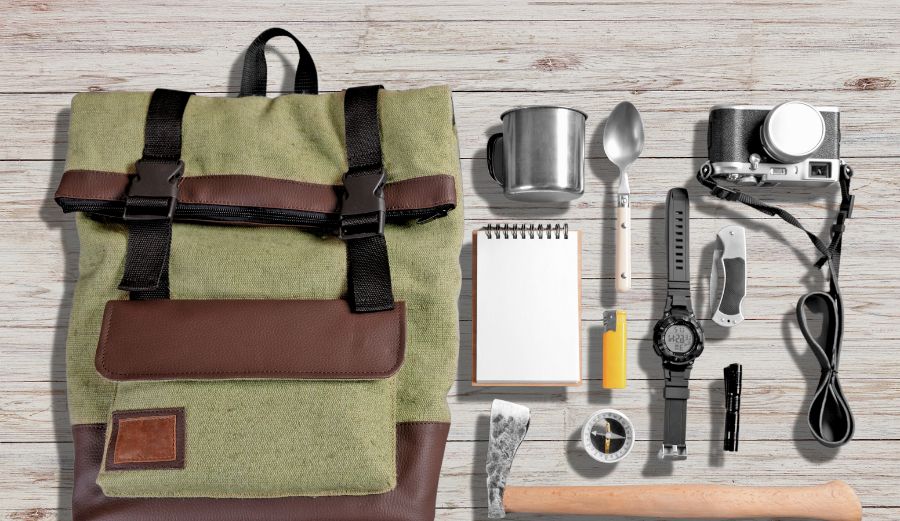
In addition to the core essentials, several other items and considerations can enhance your survival backpack’s effectiveness. These additional items cover personal identification, power and communication, and miscellaneous survival tools.
A. Personal Documents and Cash
- Identification Documents and Permits: Ensure you carry copies of essential personal documents such as your passport, driver’s license, and any relevant permits or licenses. These can be crucial for identification and legal purposes.
- Emergency Contact Details: Create a list of emergency contacts, including family members, friends, and authorities, and include their phone numbers and addresses. Having this information readily accessible can expedite rescue efforts.
- Small Denomination Cash: While electronic payments are prevalent, cash in small denominations remains invaluable in emergencies. It can be used for purchasing supplies, paying for services, or covering unexpected expenses when electronic transactions are not an option.
B. Power and Communication
- Phone Charger and Cables: Include a compatible phone charger and cables to keep your communication devices powered. Ensure they match the ports of your devices, including USB-A, USB-C, and micro USB.
- Portable Power Station for Device Charging: In situations where electricity is scarce, a mobile power station, such as the Jackery Explorer series, can provide a reliable power source for charging smartphones, laptops, and other essential electronics. They are instrumental in extended survival scenarios.
- Satellite Phone for Remote Areas: In remote areas with limited or no cell coverage, a satellite phone becomes a lifeline to call for help. Consider having one on hand if you frequently venture into such regions.
C. Miscellaneous Survival Items
- Condom for Water Storage and Protection: Condoms can serve a dual purpose. They are excellent for storing water as they are durable and can hold a significant amount. Additionally, they can be used as an improvised gloves for medical purposes or to keep tinder dry.
- Survival Straw for Water Purification: A survival straw, like the LifeStraw, filters water from various sources, removing harmful bacteria and making it safe to drink. It’s a compact and lightweight solution for ensuring access to clean water.
- Tea Light Candles for Light and Oxygen Indication: Tea light candles are small and versatile. They can provide essential light in confined spaces, and their flame behavior can indicate oxygen levels in emergencies.
- Survival Spade for Versatile Uses: While not a primary tool, a survival spade can be handy for digging, cutting, and other tasks. Look for a compact, lightweight model that won’t add excessive weight to your backpack.
These additional considerations and items can round out your survival backpack, ensuring you’re prepared for various situations and emergencies. Tailor your backpack’s contents to your specific needs and the environments you’re likely to encounter, and regularly review and update its contents to ensure they remain current and functional.
Customizing Your Survival Backpack
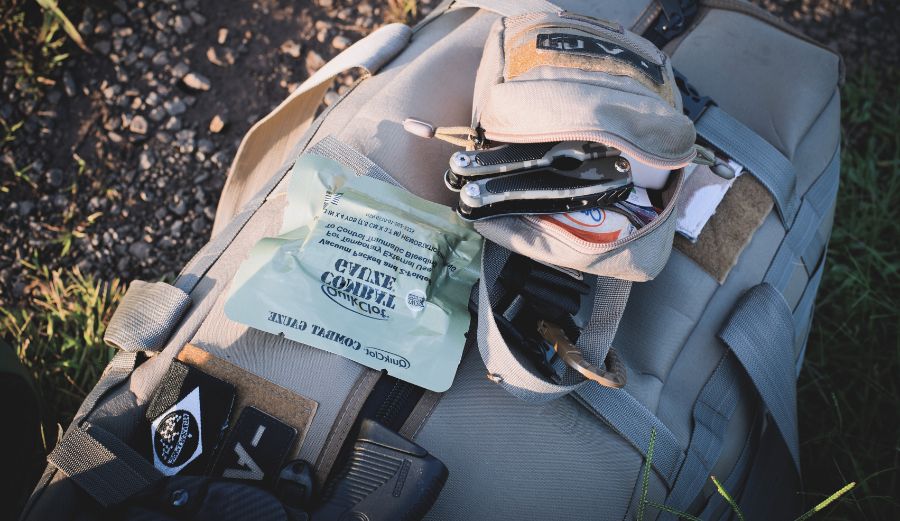
While the essentials form the core of any survival backpack, customization is vital to ensuring your pack aligns with your unique needs, group size, and environment. Here are considerations for tailoring your survival backpack:
A. Considerations Based on Group Size
Adjusting Supplies for Solo or Group Trips: Your group size significantly impacts your backpack’s contents. For solo adventurers, your pack should contain items for one person. In contrast, for group trips, you may distribute certain supplies among group members to minimize redundancy. Ensure each member carries essentials like water, food, and personal items. Still, group equipment like tents and stoves can be shared.
B. Environmental Considerations
Gear Tailored to Specific Climates and Terrains: Your gear choice should reflect the environment you’ll be exploring. In cold, snowy regions, prioritize cold-weather equipment, including insulated clothing and snowshoes. For hot and arid climates, focus on sun protection, extra water storage, and lightweight clothing. Coastal areas may require water-resistant gear, while mountainous terrains necessitate sturdy footwear and climbing equipment.
C. Activity-Related Considerations
Specialized Items for Different Outdoor Activities: Your survival backpack should align with the activities you plan to undertake. If you’re hiking, pack lightweight gear suitable for trekking. For camping, include a portable stove and cooking utensils. Rock climbing or mountaineering may require specialized safety equipment and ropes. Tailor your kit to your chosen outdoor pursuits to ensure you have the right tools for the job.
By customizing your survival backpack based on group size, environmental factors, and your chosen activities, you can optimize your preparedness for specific scenarios. Regularly review and update your customized gear to stay well-equipped for outdoor adventures.
The Rule of Threes: Prioritizing Survival
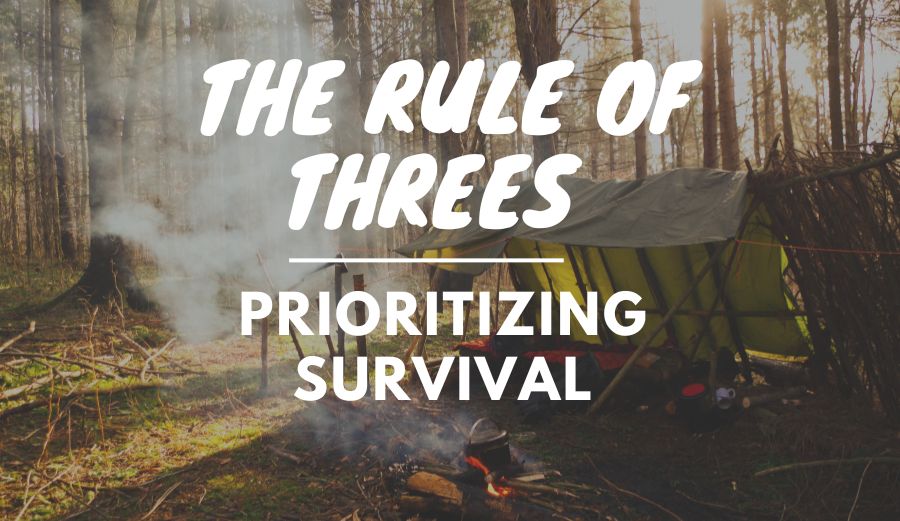
Regarding survival, the Rule of Threes is a fundamental guideline that can make all the difference in prioritizing your needs and actions in emergencies. Understanding its significance and practical application is crucial for any outdoor enthusiast or prepper. Here’s a breakdown of the Rule of Threes:
A. The Significance of the Rule of Threes
The Rule of Threes highlights the critical priorities in a survival situation and provides a framework for decision-making:
- Three Minutes Without Air: You can survive for about three minutes without air. This underscores the immediate need for a stable air supply. In situations like drowning or choking, prompt action is vital.
- Three Hours Without Shelter: Exposure to extreme weather conditions can lead to hypothermia or hyperthermia within hours. Having adequate shelter, such as a tent or waterproof clothing, is crucial to maintaining your core body temperature.
- Three Days Without Water: Dehydration can become life-threatening after three days. Access to clean drinking water or purification methods is a top priority in most survival scenarios.
- Three Weeks Without Food: While food is essential for long-term survival, it becomes a priority only after addressing immediate concerns like air, shelter, and water.
B. How to Prioritize Based on Survival Needs
Understanding the Rule of Threes helps you prioritize your actions and allocate resources effectively:
- Assess the situation: Determine which aspect of the Rule of Threes is most critical in your specific emergency.
- Address immediate needs: If you lack air, shelter, or water, focus on securing these essentials first. For example, find a safe breathing space, set up shelter, or locate a water source.
- Plan for the long term: Once immediate needs are met, focus on sustaining yourself over time. This includes securing a food source and signaling for rescue if necessary.
C. Practical Application in Emergency Scenarios
The Rule of Threes serves as a mental framework during emergencies:
- Stay calm: Panic can cloud judgment. Remember the Rule of Threes to stay focused on priorities.
- Assess your situation: Quickly evaluate which “three” is the most pressing concern.
- Act decisively: Take immediate steps to address the most critical need while considering the others.
- Adapt and plan: Once the immediate threat is mitigated, develop a more comprehensive survival plan addressing all aspects of the Rule of Threes.
Understanding and applying the Rule of Threes can help you make informed decisions, stay resilient, and increase your chances of survival in challenging situations. Whether you’re an avid adventurer or simply preparing for unexpected emergencies, this rule is valuable in your survival toolkit.
Organizing and Packing Tips for Your Survival Backpack
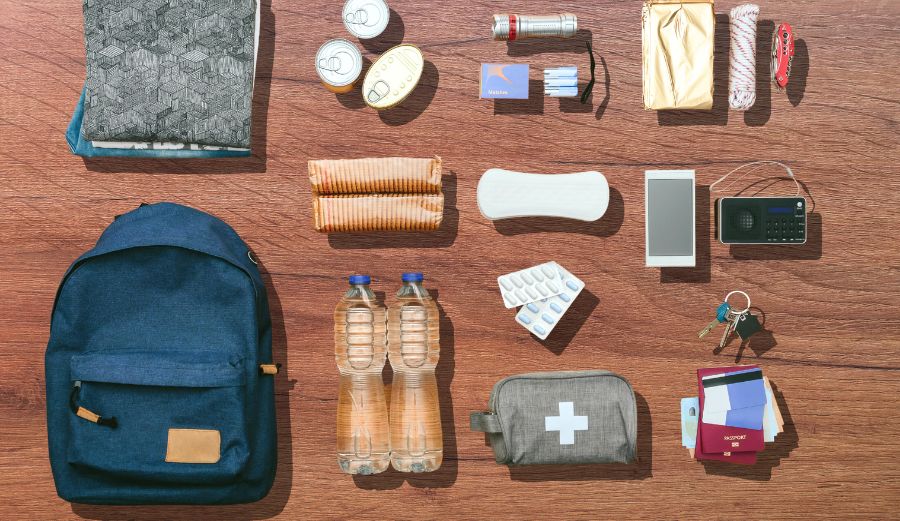
A well-organized survival backpack can be a lifesaver during emergencies. To ensure you’re well-prepared and can access essential items quickly, follow these organizing and packing tips:
A. Creating a Comprehensive Checklist:
- Begin by making a detailed checklist of essential items based on your specific needs and the duration of your intended use. This list will help you stay organized and avoid overlooking and paying attention to critical supplies.
B. Categorizing and Prioritizing Items:
- Divide your items into categories to make them easier to locate when needed. Prioritize essential things like water, food, and first aid supplies, ensuring they are easily accessible in emergencies.
C. Ensuring Waterproof and Moisture-Proof Storage:
- Protect your supplies from moisture by using waterproof backpacks or bags. This step is essential to keep your food, electronics, and other sensitive items dry and functional in wet or unpredictable weather conditions.
D. Maximizing Space with Compression Sacks and Vacuum-Sealed Bags:
- Reduce wasted space by employing compression sacks or vacuum-sealed bags for your clothing and other soft belongings. These tools can help you reduce the volume of your gear and create more room for essentials.
E. Regular Inspection and Maintenance of the Survival Backpack:
- Regularly examine and upkeep your survival backpack to guarantee that all items are in excellent working condition. Replace expired food, update documents, and replenish any items that may have been used up or passed. Regular maintenance ensures your backpack is always ready for action.
Following these organizing and packing tips, you can create a well-structured and efficient survival backpack that enhances emergency preparedness. Review and update your supplies regularly to ensure they remain relevant and in good condition, ensuring your safety in challenging situations.
Final Words
In the face of uncertainty, a well-prepared survival backpack can make all the difference. By carefully considering what to put in a survival backpack, you can balance necessity and mobility, ensuring it remains lightweight yet comprehensive.
Remember that preparedness is an ongoing process, so regular reviews and updates of your supplies are crucial to maintaining their relevance and condition.
Whether heading into the wilderness or preparing for emergencies, your survival backpack is your lifeline – make sure it’s equipped to keep you safe and secure.
Product Recommendations and Further Resources
A. Essential Gear Brands and Models: Quality matters when selecting gear for your survival backpack. Here are some reputable brands and models to consider:
- Backpacks: Osprey Atmos AG 65, Gregory Baltoro 65, and Deuter Aircontact Lite 65+10.
- Water Purification: Sawyer Mini Water Filter, LifeStraw Personal Water Filter, and Katadyn Pocket Water Filter.
- Food: Mountain House Freeze-Dried Meals, Wise Company Emergency Food Kits, and Clif Bars.
- Shelter: MSR Hubba Hubba NX 2-Person Tent, SOL Emergency Bivvy, and Mylar Space Blankets.
- Navigation: Suunto MC-2 Compass, Garmin GPSMAP 64sx, and National Geographic Topographic Maps.
B. Additional Reading Materials and Resources: To deepen your knowledge of survival backpack essentials and wilderness survival, consider these valuable resources:
- Books:
- “The SAS Survival Handbook” by John ‘Lofty’ Wiseman.
- “Bushcraft 101: A Field Guide to the Art of Wilderness Survival” by Dave Canterbury.
- “Deep Survival: Who Lives, Who Dies, and Why” by Laurence Gonzales.
- Websites:
- Survivalist Boards: An online community with discussions on various survival topics.
- REI Expert Advice: Offers articles, videos, and expert advice on outdoor and survival skills.
- Survival Blog: Features a wealth of information on preparedness and survival strategies.
- Courses and Training:
- Look for local wilderness survival courses offered by organizations like the National Outdoor Leadership School (NOLS) or your local outdoor outfitters.
- Government Resources:
- Check your government’s emergency preparedness website for valuable information and guides.
Remember, knowledge is a powerful tool in survival situations. Continuously educate yourself and stay informed to enhance your preparedness.
